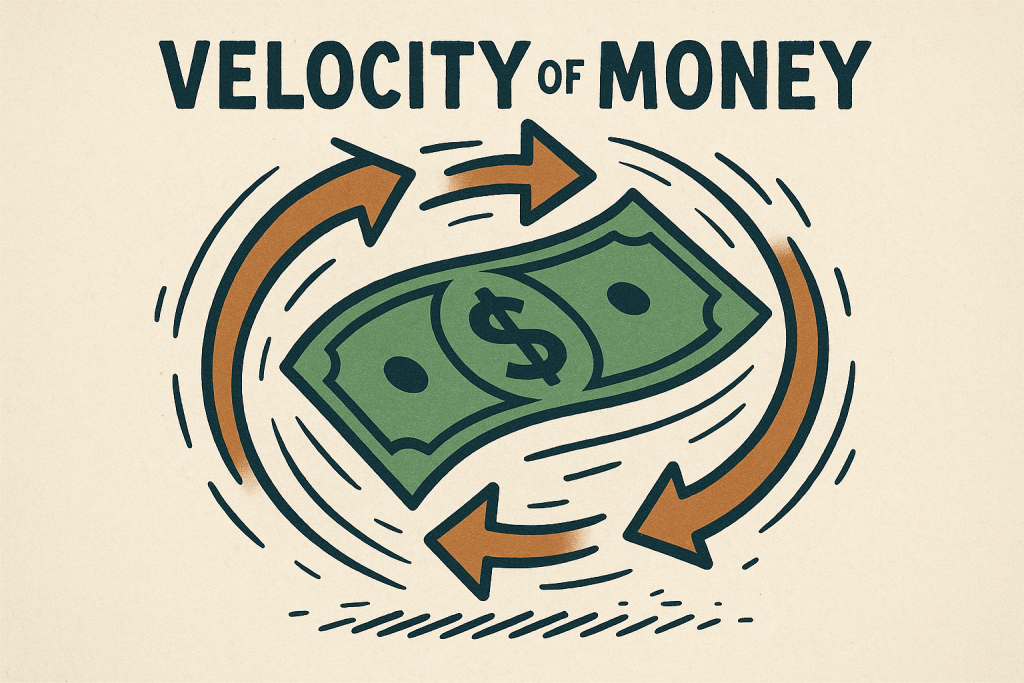“It’s about choosing freedom over dependency. And it’s about learning how money really works so you can stop working for money.” -Kyle J. Christensen
By Kyle J Christensen, Founder, Principles-Based Planner, Unique Advantage
Unique Advantage Monthly Client Email – July 2025
Most people don’t work for money simply because they want to. They work for money because they have to. They’ve built a life—home, car, education, healthcare, travel, kids—and all of it needs to be funded. So, people trade time for money. And as long as people rely solely on earned income to survive, they’re not financially free—they’re financially dependent.
At Unique Advantage™, we don’t believe in guessing your way to freedom. We believe in following time-tested principles. Not fads. Not hype. Just truth that works. That’s the purpose of Financial Principles for Life™—to give you the structure, clarity, and confidence to build a future that doesn’t rely on luck or the market.
We launched this course in June 2025 as a way to support those who are just beginning their financial journey—young professionals, recent graduates, newlyweds, entrepreneurs—anyone who’s ready to take control of their money, but just needs the right foundation. We’ve seen firsthand how the right principles, taught early and clearly, can change the entire trajectory of someone’s life.
Let’s walk through those principles together.
1. Save 15% Or More of Your Total Income
This is where the journey begins. If you aren’t saving, you aren’t progressing. Most people confuse saving with investing—but they’re not the same. Saving is about liquidity, safety, and access. Investing is about growth and return. The problem? Too many people invest money they can’t afford to lose and call it saving.
The goal here is simple: create a habit of systematically and automatically saving at least 15% of every dollar you earn, first, before you pay for anything else. Don’t leave it to willpower. Make it automatic. Make it consistent.

2. Maximum Protection
The best financial plan is not the fastest plan. It’s the plan that works under the most circumstances. It’s the plan with the most solid foundation to build upon. Protection is generally misunderstood and minimized, usually in an effort to put more money in the Wall Street gamble. Maximum protection is about improving your chances of success, regardless of the circumstance. It’s about fully insuring your assets, whether they are “necessary” or not. Life happens, people get sued, property gets damaged, accidents happen. A quality financial plan will have protections against these things.
Most people would never consider owning a home without insurance. Homes are expensive! Leaving a home uninsured would be like putting a suitcase full of money on the front lawn and hoping no one takes it. What’s significantly worse would be leaving your most valuable financial asset uninsured. What would that be? Your ability to earn an income. Surprisingly, most people don’t come close to adequately insuring their income through the use of disability and life insurance. Without your income, there isn’t another part of your plan that will succeed.
Maximum protection is all about protecting your assets and not leaving the success of your plan up to luck.

3. Full Replacement of Assets Upon Death
People don’t tend to use things they feel they can’t replace. Things they feel can be replaced, get used. Financial institutions don’t want us to use our money. They want us to leave it with them. The longer we leave our money with them, the more they make. As such, financial institutions encourage people to use products and financial strategies that cause them to be in a scarcity position in the future, one where they feel they can’t use their money because they can’t replace it.
This principle teaches us how to avoid that position of scarcity. It teaches us to create a mechanism that guarantees the replacement of our assets based on a guaranteed event. They say there’s only two things that are guaranteed in life, and it’s somewhat true. Death and taxes. A person cannot buy insurance against taxes but they can buy insurance against death.
Having sufficient permanent life insurance to replace all of your assets gives you the ability to enjoy/spend/donate all of your assets while you are living, knowing that they will be replaced to your surviving spouse or family when you pass away.

4. Build and Maintain Six Months to One Year of Income Storage
Some say “cash is trash” and others say “cash is king.” Which is it? Generally those saying “cash is trash” are the ones selling stock market investments. Their intention is to manage more of our money and get paid fees doing it.
Those that say “cash is king” are generally the richest people and financial institutions in the world. They understand the value of having cash, which is the ability to handle unforeseen life events and take advantage of opportunities when they come along.
The purpose of Income Storage is not rate of return. As such, comparisons of cash vehicles vs investments is a fool’s errand. One must build up Income Storage (cash) in order to prevent unproductive debt and be in a position to take advantage of the very best investment opportunities that exist. Without sufficient cash, those opportunities simply will be missed.
Income Storage acts as a buffer for a lack of perfect timing. It gives a person staying power in his/her investments. Adequate income storage is an essential part of building a proper foundation.

5. The Velocity of Money
Financial institutions have one objective, for us to give up control and use of our money to them. They constantly persuade us to put our money into things that provide no cash flow back to us, subject our access to possible penalties, and so on.
Hypocritically, financial institutions practice something completely opposite of what they teach. They create wealth by putting their money into things that produce cash flow immediately. Their goal is to get their money back as quickly as possible, so that they can use it again and again. They know that their true path to wealth is by getting as many uses of their money as possible. That’s what Velocity of Money is. The greater the number of uses, the greater the velocity.
We must do the same. Velocity of Money for us starts by saving our money in places where we retain control and use. It continues by us investing into real assets that produce income back to us immediately (or very quickly). When we receive income from assets, we save it, and use it again to acquire more assets. The more uses we get of our money, the greater the velocity.

Why This Matters
You’ve probably been taught to save for retirement, diversify your investments, and hope the market cooperates. But that is simply the plan financial institutions want us to follow, because it works best for them. It has rarely, if ever, worked out well for anyone else.
Financial Principles for Life™ gives you a framework rooted in ownership, control, and clarity. It’s about becoming a steward of your money—not just a consumer. It’s about choosing freedom over dependency. And it’s about learning how money really works so you can stop working for money.
The path isn’t complex. But it is different. It goes against the grain of mainstream financial advice. And that’s exactly why it works.
If you—or someone you care about—is just getting started on their financial journey and could benefit from this course, send us a message at info@uniqueadvantag.biz. Or reach out to us on social media. We’d be happy to get you access and support you through the process.
Your future deserves nothing less.
Sincerely,
Kyle J Christensen
P. S.
Check out past newsletters here!https://uniqueadvantage.biz/schedule-now/
Have you met with a financial planner yet? Click the link below to schedule your free session! https://uniqueadvantage.biz/schedule-now/
